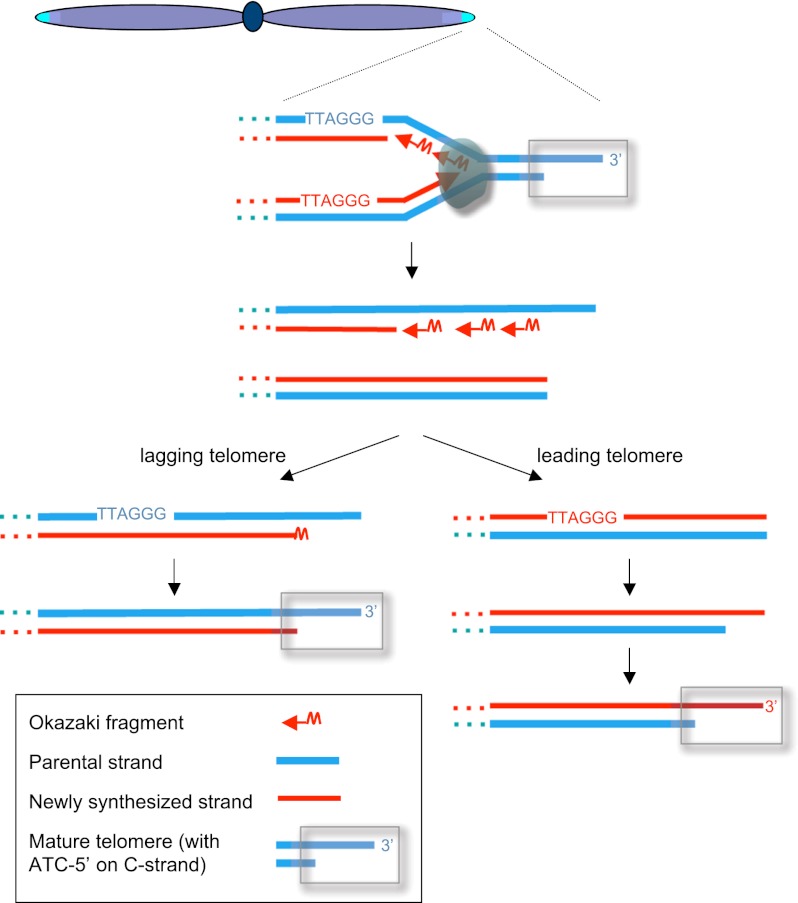Figure 1.
The completion of semiconservative DNA replication results in daughter chromosomes with asymmetric termini that undergo processing to produce mature telomeres. (Left) The newly replicated telomere resulting from lagging strand synthesis retains the terminal RNA primer, which is removed approximately an hour later in a process that also specifies the terminal nucleotides on the C-strand (—ATC-5′) to generate a mature telomere. (Right) The initial product of leading strand DNA replication is a terminus that is blunt; resection of the C-strand to create the mature G-rich overhang occurs in two temporally discrete stages.

